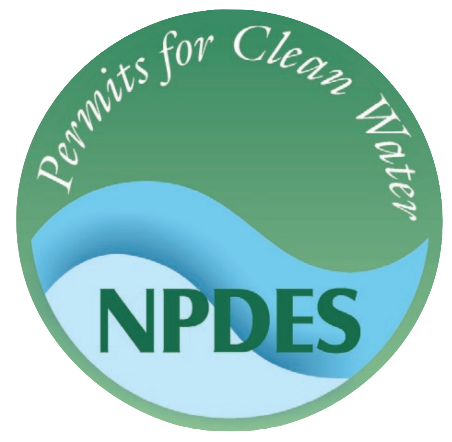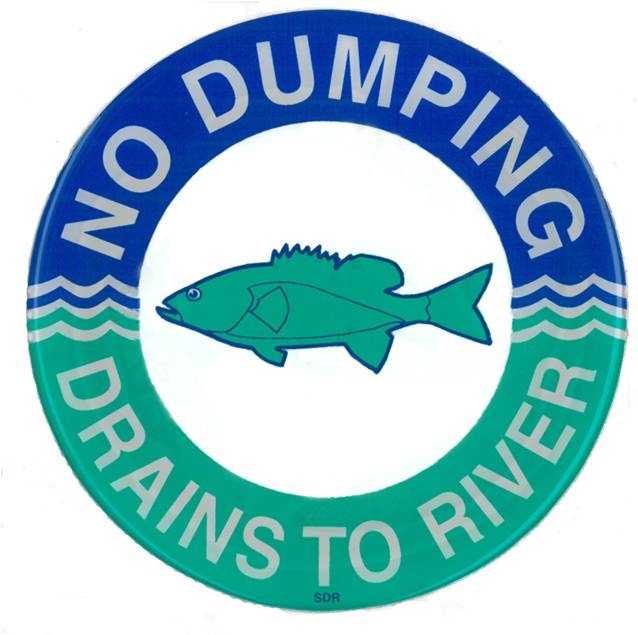BAY COUNTY ROAD COMMISSION SNOW REMOVAL-ICE CONTROL
Snow removal and ice control are no doubt one of the most demanding tasks any highway maintenance agency has to deal with. You do the best you can with what you have and hope the complaints will be minimal. 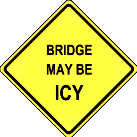 Maybe you will be complimented, but don’t bet on it. It’s far easier for the public to respond to poor road conditions than to say “Thank you for the clear roads.”
Maybe you will be complimented, but don’t bet on it. It’s far easier for the public to respond to poor road conditions than to say “Thank you for the clear roads.”
Winter weather and the related storms are far too complex and unpredictable to have a simple set of rules or policies. Mother Nature does not always co-operate. It has been estimated that there are over 66,000 different winter storm conditions. Each storm requires its own analysis and resulting response. Our goal is to provide safe roads for the public as quickly and efficiently as possible.
Winter maintenance includes the snowplowing and deicing of the road surface. The most effective and least expensive deicing material available today is sodium chloride, or rock salt. To understand why, where, and when to apply rock salt, we must understand how it works. Salt, used as a chemical deicer, must dissolve on the road to be effective. Once applied to the road, salt uses moisture from ice or snow on the road surface to dissolve and form brine. Salt – as it dissolves – gives off heat, melting the surrounding snow/ice and continues to form more brine. The dissolved salt lowers the freezing point of the surrounding water and prevents refreezing. Heat from sunshine, rising daytime temperatures, and heavy traffic volume help maintain this melting process.
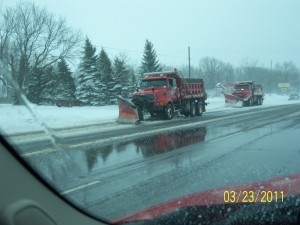 Once the brine has formed, it works its way through the ice/snow down to the pavement surface. Gravity then spreads the brine from the crown of the roadway toward the shoulder, breaking the bond of ice/snow. This, of course, takes time and we must wait for the salt to do its work. The melting action starts quickest at temperatures above twenty degrees Fahrenheit, and will continue working for about three hours. At temperatures below twenty degrees, an effective treatment can still be made by adding calcium chloride to salt.
Once the brine has formed, it works its way through the ice/snow down to the pavement surface. Gravity then spreads the brine from the crown of the roadway toward the shoulder, breaking the bond of ice/snow. This, of course, takes time and we must wait for the salt to do its work. The melting action starts quickest at temperatures above twenty degrees Fahrenheit, and will continue working for about three hours. At temperatures below twenty degrees, an effective treatment can still be made by adding calcium chloride to salt.
Salting operations typically start when snow starts to adhere to and accumulate on the driving surface, or when the road becomes slippery. Winter driving requires extra caution on hills, curves, bridge decks, and intersections. When plowing/salting, it is desirable to crowd the centerline of the road and move the snow to the outside edge. Deicing materials are applied near the crown or centerline. Studies show that snow melts faster when salt is applied in narrow (three or four feet) strips. To help keep the salt from bounding onto the shoulders or off the road, the truck speed should never exceed 35 m.p.h. Experience has shown that by keeping the salt centered in a narrow strip, the brine will form quicker and flow from the crown toward the outside edge, breaking the snow/ice bond.
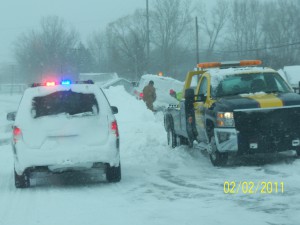 Weather conditions have a major influence on salt application and snow removal. Predicted weather, temperatures, current conditions, wind direction, wind speed, and traffic volumes, all influence what type of treatment should be initiated. Spreading salt in windy conditions requires a lot of forethought. Wind not only affects salt patterns; it affects the salt brine as well. During extreme windy conditions, brine may not form or flow like it normally would. There are times during heavy winds when snow is blowing across the road that salt should not be applied at all. The application of salt at this point may worsen conditions.
Weather conditions have a major influence on salt application and snow removal. Predicted weather, temperatures, current conditions, wind direction, wind speed, and traffic volumes, all influence what type of treatment should be initiated. Spreading salt in windy conditions requires a lot of forethought. Wind not only affects salt patterns; it affects the salt brine as well. During extreme windy conditions, brine may not form or flow like it normally would. There are times during heavy winds when snow is blowing across the road that salt should not be applied at all. The application of salt at this point may worsen conditions.
During the winter months, the Bay County Road Commission (BCRC) utilizes a 24 hour-seven day a week road patrol for monitoring weather and related problems. These patrol people provide for a positive and quick response by BCRC, should conditions dictate. The Road Commission will respond in force when conditions warrant it. The State Highway system is the first to be plowed. As soon as the State Highways (I-75, US10, M-15, M-25, M-247, M-138, and M-13) have been plowed and treated, the trucks go to the county primary road system (Midland, Wheeler, Beaver, Mackinaw, Seven Mile, Wilder, etc.) which is then plowed and treated. Under normal conditions, it takes about four hours to clean up the State Highway system. When the primary system is done, the trucks go on the local road system and subdivisions. Years past, it would take over a week to clean up after a snowstorm. With the new trucks and equipment, trained manpower, and new techniques, a typical storm can be cleaned up in two days.




